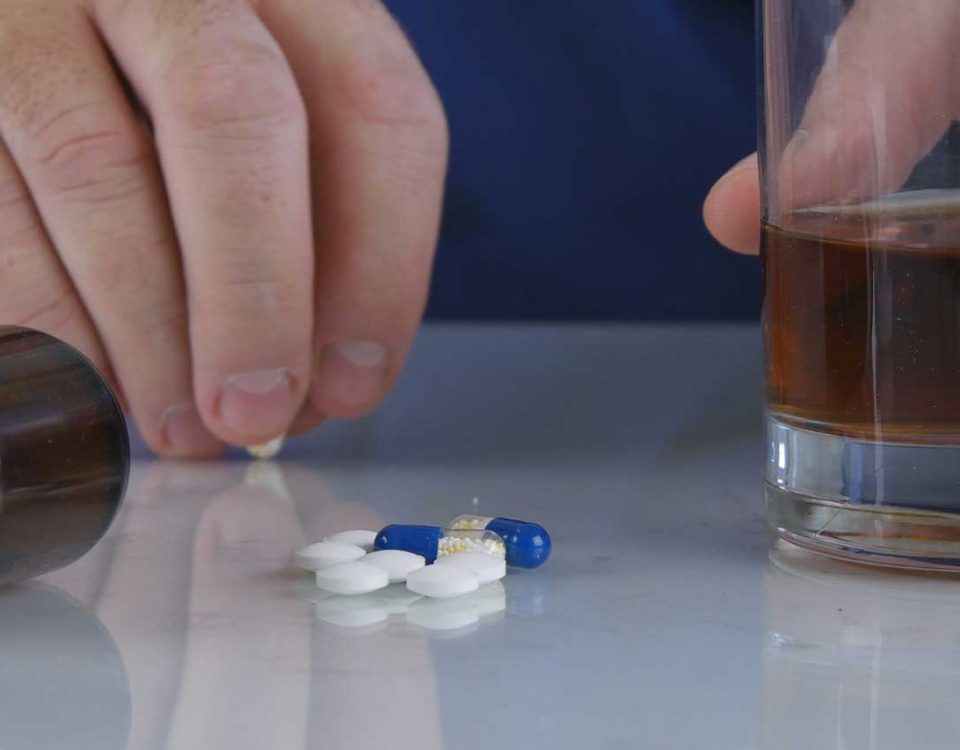Understanding potential side effects is essential in the realm of drugs since each medication has a unique set of advantages and potential dangers. Today, we look into the fascinating world of butorphanol, sold as Stadol, Torbutrol, Tobugesic, or Dolorx. It is a medication that has drawn interest for its therapeutic properties. However, its moniker conceals a layer of less well-known but crucial information about possible butorphanol side effects.
Many negative effects could be associated with the use of this substance. Below, the experts of our Florida rehabs share the possible butorphanol side effects that may occur so you may have the information you need to make decisions about your health and well-being.
What Is Butorphanol?
Similar to the sedative xylazine, butorphanol is a potent analgesic medication that belongs to the class of drugs known as opioid agonist-antagonists. It is generally used to treat moderate to severe pain, especially when more conventional painkillers may be ineffective.
Butorphanol reduces pain signals by acting on particular receptors in the brain and spinal cord, offering relief to people with a variety of diseases, including postoperative pain, migraines, and labor pain. One distinguishing feature of butorphanol is that it has two unique mechanisms of action.
The butorphanol MOA induces both agonist and antagonist effects, which allows it to concurrently excite and block opioid receptors. Its distinctive quality distinguishes it from conventional opioid drugs and enhances its capacity for pain relief.
Butorphanol is a drug that is categorized as a controlled substance in numerous countries due to its potency and potential for abuse. It is offered in a variety of forms, including tablets, nasal sprays, and injections, each of which has unique benefits based on the user's need. But it also has some possible adverse effects.
Is Butorphanol a Controlled Substance?
Yes, butorphanol is classified as a controlled substance in the United States and many other countries due to its potential for abuse and physical and psychological dependence. It’s categorized as a Schedule IV controlled substance in the U.S. under the Controlled Substances Act.
A drug that is a controlled substance means that there are specific regulations and restrictions on its production, distribution, prescribing, and dispensing. Healthcare providers must adhere to these regulations when prescribing controlled substances like butorphanol to patients, and patients must obtain the medication through a valid prescription from a licensed healthcare professional.
Butorphanol is categorized as a Schedule IV controlled substance, meaning it has a potential for abuse or dependence. Other drugs in this category that may sound familiar include Xanax, Soma, Valium, and Ativan. Butorphanol’s drug classification is based on its pharmacological properties and the potential for misuse, and healthcare providers and patients need to be aware of these regulations when using this medication.
What Is the Drug Butorphanol Used For?
Butorphanol is used primarily for pain management and as an adjunct to anesthesia. Its primary uses include:
- Pain management: Butorphanol is used to treat moderate to severe pain relief, such as postoperative pain, migraine headaches, and labor pain. A butorphanol injection may be administered intravenously (IV) or intramuscularly (IM) and can be administered via intranasal and oral routes, depending on the clinical context and patient needs.
- Anesthesia: Butorphanol can be utilized as an adjunct to general or regional anesthesia to provide analgesia and reduce the need for other anesthetic medications.
- Sedation: In some cases, butorphanol may also have a sedative effect, which can be useful in managing anxiety or restlessness in patients.
It's important to note that butorphanol has a mixed pharmacological profile; it can act as both a kappa opioid receptor agonist and a mu-opioid receptor antagonist. This means it can be advantageous in certain clinical situations.
However, due to its potential for abuse and respiratory depression, it should be used with caution, and close monitoring of patients is essential during its administration. The specific butorphanol dosage and use should always be determined by a qualified healthcare professional based on the patient's condition and medical history to avoid adverse effects such as respiratory depression and overdose.
Butorphanol Adverse Effects
It's important to be informed of any possible side effects when considering a new medication. For instance, while butorphanol can offer relief for individuals experiencing severe pain or sometimes anxiety, anyone considering the medication must be aware of any possible side effects.
Common butorphanol side effects include:
- Confusion
- Constipation
- Dizziness
- Drowsiness
- Itching
- Nausea
- Skin irritation
- Sweating
- Urinary retention
- Vomiting
Though this list gives a general overview of possible butorphanol side effects, it's vital to remember that every person will experience things differently. For specific guidance, it is always advised to speak with a healthcare practitioner.
It’s also important to consider that other forms of administration may cause more specific side effects. For instance, butorphanol nasal spray may be more likely to cause respiratory and nasal irritation, as it is inhaled directly as opposed to being taken orally or injected.
It’s advised to collaborate with your healthcare practitioner to reduce risks and guarantee a safe and efficient butorphanol dose and administration by being aware of potential adverse effects. Keep in mind that this information is intended to empower and educate rather than to discourage using medicine when required and suitable.
That being said, like most illicit and prescription opioids, butorphanol does have a potential for abuse, albeit one that is lower than more well-known narcotics. Regardless, it is crucial to address any drug abuse, especially that involving opioids.
Sebring Drug Treatment That Can Help
Abusing an opioid or prescription medication is a very slippery slope that can easily lead to a slew of physical and emotional consequences. Luckily, Banyan’s drug rehab in Sebring, FL, offers the resources to help people from many different walks of life regain their health and sobriety. Patients receiving care at select Banyan addiction treatment centers in Florida can also access an effective opioid detox program that is designed to help them navigate withdrawal symptoms safely.









